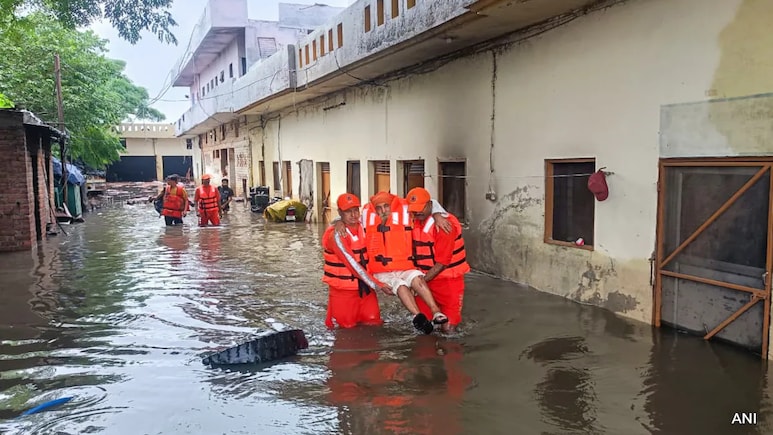
- Floods in Punjab have killed at least 37 people and submerged 1.75 lakh acres of farmland
- Over 1,600 villages across 23 districts have been inundated in the worst flood since 1988
- The 1988 floods killed 383 in Punjab and flooded 18 per cent of the state due to river overflow
The devastating floods have killed at least 37 people and left a trail of destruction in Punjab. Exacerbated by continuous heavy rains and the release of water from upstream dams, the floodwater submerged over 1.75 lakh acres of farmland, primarily paddy fields. It has also inundated over 1,600 villages across 23 districts. This is the northern state's worst deluge since 1988.
What Happened In 1988 In Punjab?
In 1988, the Sutlej, Beas, and Ravi rivers overflowed and flooded almost the entire state, from Gurdaspur to Ludhiana and Jalandhar to Sangrur.
Floods in Punjab, Haryana, and Himachal Pradesh killed more than 1,400 people in northern India. In Punjab, 383 died and 62 were missing, as per government data.
Heavy rainfall began in March, but unprecedented rains in September forced the Bhakra and Pong dams to release large volumes of water, the India Meteorological Department (IMD) reported at the time.
Between September 4 and October 2, floods marooned 2 lakh people in 1,483 villages, destroyed over 8,900 houses, and ruined crops and stored foodgrains in mandis.
Earlier flash floods in the Ravi River already affected Gurdaspur, isolating 40 villages for three days. Heavy rains in Patiala submerged a third of the city, collapsed 12 buildings, and left over 20,000 people homeless.
Floodwaters also washed away canal links in Hoshiarpur, Jalandhar, and Ropar. Authorities struggled to manage weak embankments, clogged drains, encroached floodplains, and unplanned construction along riverbanks.
A study by the Punjab Remote Sensing Centre showed that 18 per cent of the state was flooded in 1988 due to river overflows. Experts attributed the severity to weak embankments, unclean drains and canals, deforestation, encroached floodplains, and infrastructural projects that disrupted natural drainage.
Punjab Floods 2025
Ten districts - Gurdaspur, Pathankot, Amritsar, Hoshiarpur, Ferozepur, Fazilka, Kapurthala, Tarn Taran, Jalandhar, and Rupnagar - have been hit hardest by the floods, displacing thousands and disrupting electricity, water, and road services.
Rescue teams from the NDRF and the Indian Army are evacuating residents and providing food, medical aid, and relief supplies.
The Punjab government has declared the entire state disaster-affected, with Chief Secretary KAPS Sinha activating emergency protocols and mobilising departments like Public Works, Water Resources, and Powercom to restore critical infrastructure.
Punjab Cabinet Ministers, along with senior AAP leader Manish Sisodia, inspected vulnerable spots along the Beas River in Tarn Taran, engaging with locals on rising water challenges. Union Agriculture Minister Shivraj Singh Chouhan will visit the affected areas on Thursday.
Track Latest News Live on NDTV.com and get news updates from India and around the world

